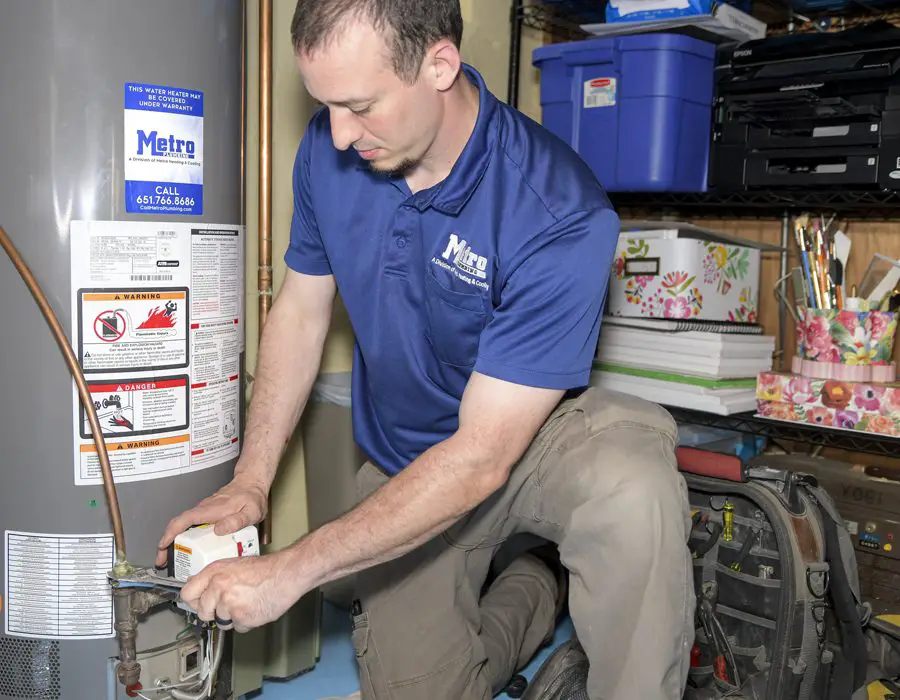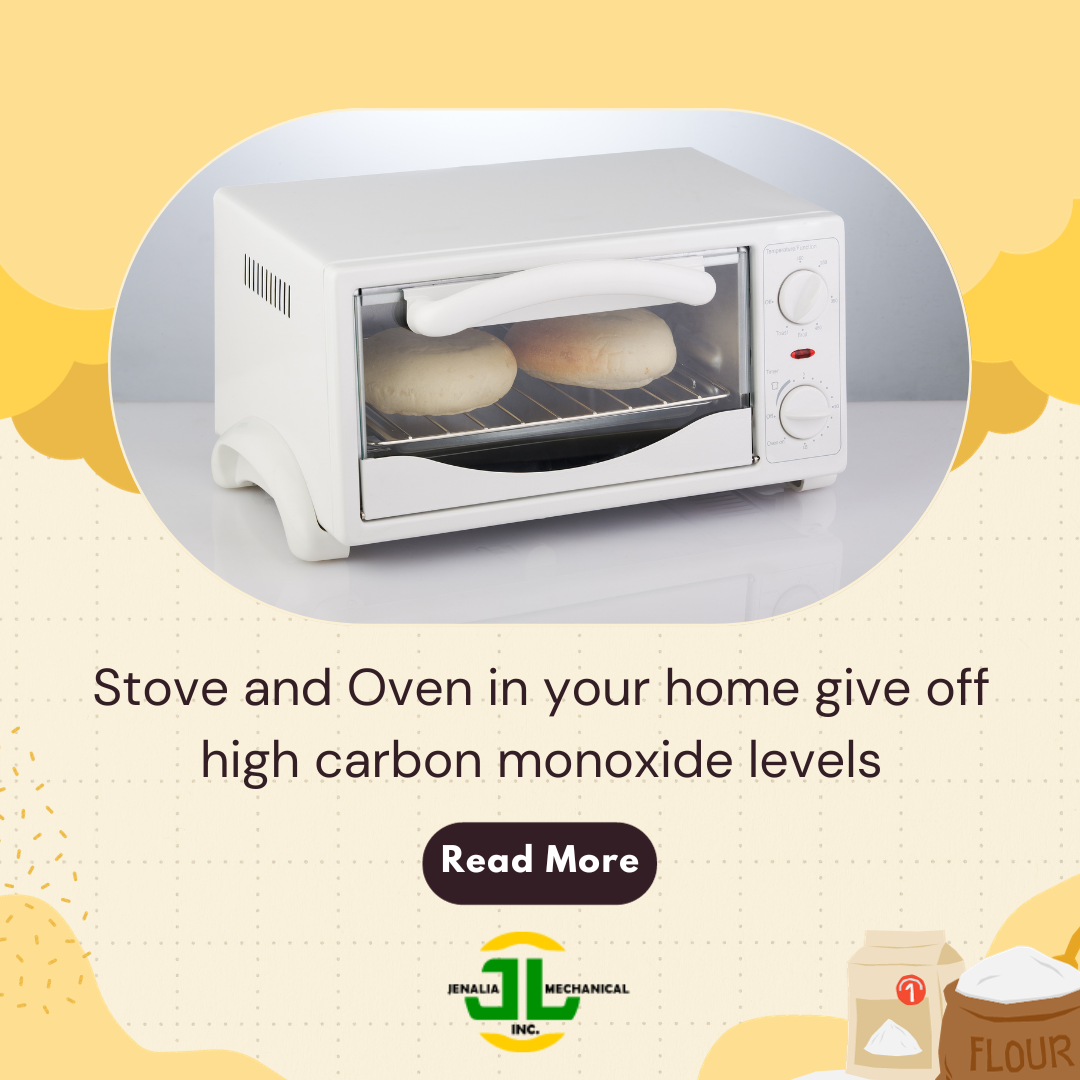If your furnace is off, you cannot get carbon monoxide poisoning as it is not producing any harmful gases. However, it is important to ensure proper ventilation to prevent any potential risks when the furnace is in use.
Carbon monoxide is a colorless, odorless gas that can be deadly if inhaled in high concentrations. Regular maintenance and having carbon monoxide detectors installed in your home are crucial safety measures to protect against potential poisoning. Understanding how carbon monoxide is produced and being proactive in ensuring the safety of your heating system can prevent any hazardous situations.
Remember, safety always comes first when it comes to your home’s heating equipment.

Potential Risks Of Carbon Monoxide Poisoning
Carbon monoxide poisoning poses serious risks even when your furnace is off. This toxic gas is colorless and odorless, making it difficult to detect without proper precautions.
Signs Of Carbon Monoxide Leakage
- Unusual smells may indicate a carbon monoxide leak.
- Headaches, dizziness, and nausea are common symptoms of exposure.
- Carbon monoxide detectors can provide early warning of dangerous levels.
Understanding The Threat
Even when your furnace is turned off, the risk of carbon monoxide poisoning remains, necessitating vigilance and preventive measures to safeguard your household.

Credit: fastercapital.com
Impact Of A Shut Down Furnace
When your furnace is shut down, the risk of carbon monoxide poisoning may still exist, especially if there are underlying issues within the system. It’s crucial to understand the potential dangers associated with a deactivated furnace to ensure the safety of your household.
Furnace Shutdown And Risk Of Carbon Monoxide Poisoning
Carbon monoxide can still pose a threat even if your furnace is turned off, particularly if there are leaks or malfunctions present. This colorless and odorless gas can accumulate in enclosed spaces, leading to severe health risks.
Related Dangers
- Leaking furnaces: A common cause of carbon monoxide poisoning even when the furnace is not in operation.
- CO circulation: Other sources like fireplaces or water heaters can introduce carbon monoxide into your home’s air.
Preventive Measures And Maintenance
When it comes to ensuring the safety of your home and family, taking preventive measures and performing regular maintenance on your furnace is crucial. Carbon monoxide (CO) is a colorless, odorless, and tasteless gas that can be emitted from fuel-burning appliances, including furnaces. To prevent the risk of carbon monoxide poisoning, it is essential to implement appropriate preventive measures and maintenance routines for your furnace.
Regular Furnace Inspection
Regular inspections of your furnace by a certified professional are critical to ensure its proper functioning. Schedule annual maintenance to check for any potential leaks, blockages, or malfunctions that could lead to the release of carbon monoxide. Professional inspections can detect issues early, preventing potential hazards and ensuring the safety of your home.
Co Detectors And Safety Measures
- Install carbon monoxide detectors in key areas of your home, particularly near sleeping areas and close to the furnace. Regularly test the detectors and replace batteries to ensure they are functioning properly.
- Implement safety measures such as proper ventilation of the furnace area, regular cleaning of vents and ducts, and ensuring adequate airflow to prevent the accumulation of carbon monoxide within the home.
By establishing a routine for CO detector maintenance and implementing safety measures, you can minimize the risk of carbon monoxide poisoning even when the furnace is not running. Remember that early detection and preventive actions are key to maintaining a safe and healthy home environment.
Professional Guidance And Awareness
When it comes to carbon monoxide poisoning, professional guidance and awareness are crucial in ensuring the safety of your home and loved ones. It is essential to have expert inspection and maintenance of your furnace to prevent any potential risks. Additionally, educating homeowners about the dangers and symptoms of carbon monoxide poisoning plays a vital role in creating awareness and taking necessary precautions.
Expert Inspection And Maintenance
Regular expert inspection and maintenance of your furnace are essential in keeping your home safe from carbon monoxide leaks. By having a qualified professional inspect your furnace, you can identify any potential issues that may lead to carbon monoxide leaks, even when the furnace is off. Maintenance tasks such as checking for cracks, leaks, and ensuring proper ventilation are essential in preventing carbon monoxide poisoning.
Educating Homeowners About Risks
Homeowners need to be educated about the risks of carbon monoxide poisoning, even when their furnace is turned off. Providing information about the sources of carbon monoxide, such as fireplaces and water heaters, can help homeowners understand how carbon monoxide can still be present in their homes. It is crucial to raise awareness about the importance of having carbon monoxide detectors installed, as these can alert homeowners to any potential leaks, even when the furnace is not in use.
In conclusion, professional guidance and awareness are key when it comes to preventing carbon monoxide poisoning, whether your furnace is off or not. By ensuring regular expert inspection and maintenance, as well as educating homeowners about the risks and symptoms of carbon monoxide leakage, we can create a safer environment for everyone.
Response To Suspected Co Leakage
If your furnace is off, a carbon monoxide leakage is unlikely as no fuel is being burned to produce it. However, beware of potential CO from other sources like a fireplace or water heater that may circulate through your home if the HVAC system is running.
Regular maintenance is crucial to prevent leaks.
Immediate Steps To Take
If you suspect a carbon monoxide (CO) leakage in your home, it is crucial to take immediate steps to ensure your safety and the safety of your family. Here are some immediate steps that you should take:- Open all windows and doors to allow fresh air to circulate throughout the house. This will help in reducing the concentration of carbon monoxide gas indoors.
- Evacuate the premises as soon as possible. Move everyone, including pets, to a safe location away from the suspected source of the leak. It is important to prioritize your well-being and get to fresh air.
- If anyone is experiencing symptoms such as headache, dizziness, nausea, or confusion, call emergency services immediately. These could be signs of carbon monoxide poisoning, and prompt medical attention is necessary.
- Do not attempt to locate the source of the leak yourself. Leave this task to the professionals who have the proper equipment and training to handle such situations.
Seeking Professional Help
When dealing with a suspected carbon monoxide leakage, it is crucial to seek professional help. Here’s what you should do:- Contact your local utility company, fire department, or a licensed HVAC technician experienced in dealing with carbon monoxide issues. They will be able to assess the situation and determine if there is a carbon monoxide leak.
- Do not attempt to fix the issue yourself, as it requires expertise and specialized knowledge. Trying to fix it on your own can be risky and may worsen the situation.
- Ensure that all fuel-burning appliances, such as furnaces, boilers, water heaters, and stoves, are inspected by a professional at regular intervals to prevent future carbon monoxide leaks.
- Consider installing a carbon monoxide detector in your home. These detectors are designed to sound an alarm when they detect elevated levels of carbon monoxide. Regularly test the detector to ensure proper functioning.
- Follow any recommendations or guidelines provided by the professionals regarding repairs, maintenance, or replacement of any faulty equipment or appliances.

Credit: jenalia.com

Credit: www.facebook.com
Frequently Asked Questions For Can You Get Carbon Monoxide Poisoning If Your Furnace Is Off
Can You Get Carbon Monoxide Poisoning If Your Heating Is Off?
No, you won’t get carbon monoxide poisoning if your heating is off as there will be no fuel burning to produce it.
How Do I Know If My Furnace Is Leaking Carbon Monoxide?
To determine if your furnace is leaking carbon monoxide, watch for unusual smells while the heater is running, specifically a burning scent outside the furnace.
How Common Is Carbon Monoxide Poisoning From Furnace?
Carbon monoxide poisoning from a furnace is common, with leaking furnaces causing deadly poisoning annually. It directly relates to running the heating system. However, if the furnace is off, it won’t produce carbon monoxide.
Can Carbon Monoxide Leak If Stove Is Off?
No, carbon monoxide cannot leak if the stove is off.
Can Carbon Monoxide Leak If My Furnace Is Off?
No, if your furnace is completely turned off, it will not produce carbon monoxide gas.
Conclusion
It’s crucial to understand that even if your furnace is off, there can still be potential dangers of carbon monoxide leaks from other sources in your home. Regular maintenance and carbon monoxide detectors are essential for safeguarding against this silent killer.
Stay vigilant and prioritize safety to protect your household.